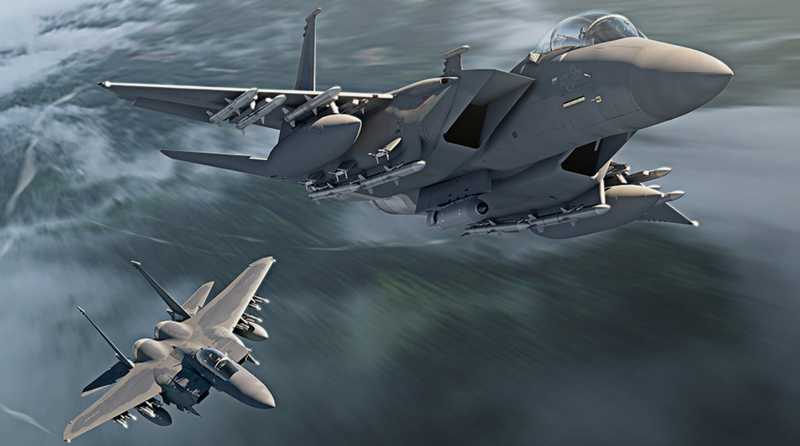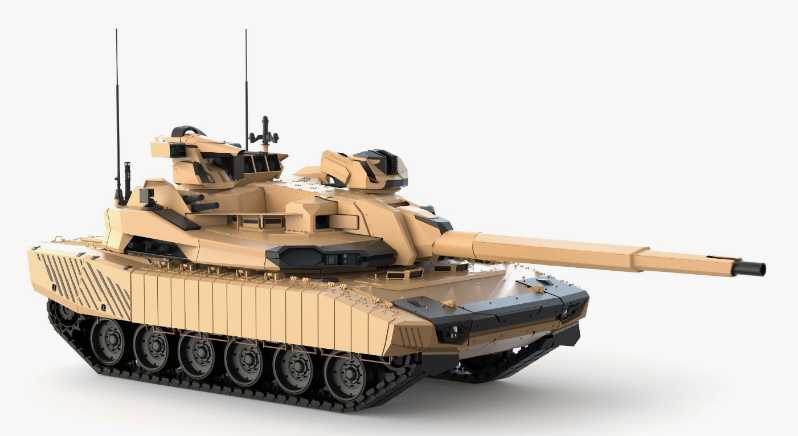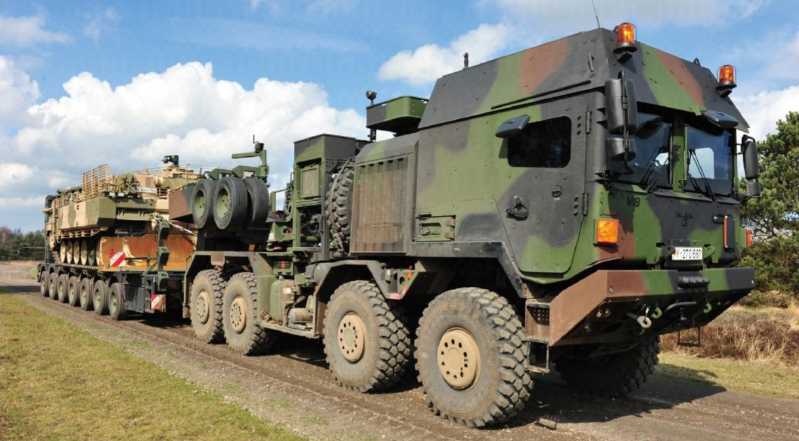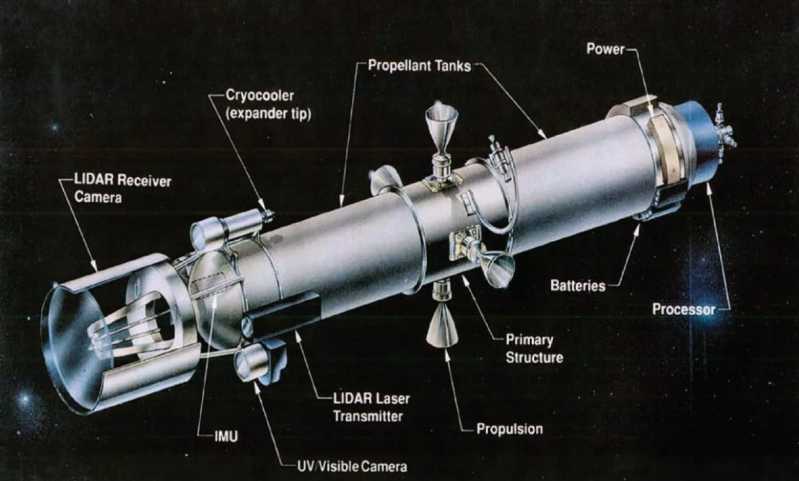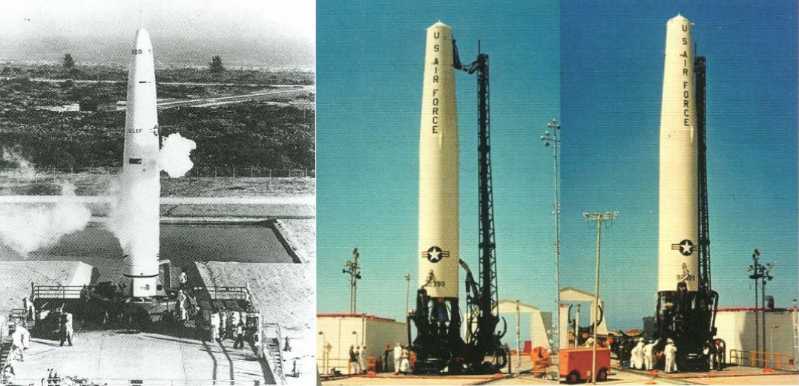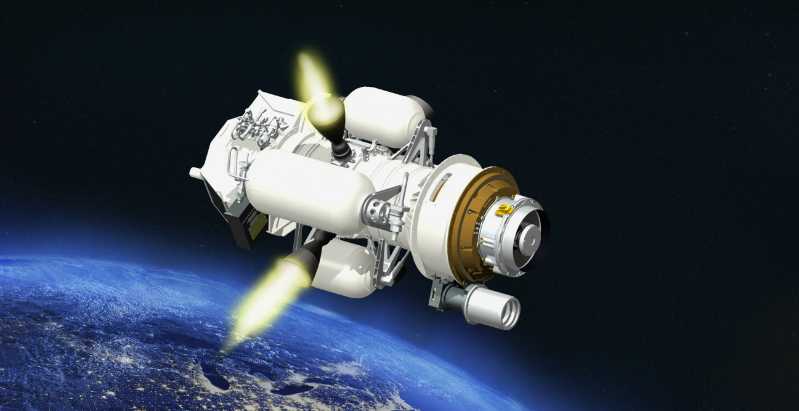In the Chinese Navy’s ship series, there is a group of ships that have made great contributions to the development, finalization, and installation of new shipborne equipment in different periods of our country. They are test ships. The test ship is a comprehensive marine test platform for shipborne weapons exclusively owned by the Navy. Only after the Navy’s new weapons have been tested and finalized under various sea conditions can they be installed in batches on combat ships. Therefore, in the process of naval equipment development, test ships are an indispensable type of ship.
The pioneer--Jinan ship
When the Chinese Navy was first established, the demand for marine test ships was not particularly urgent. Due to the limitations of equipment level and combat mission, there are almost no large combat ships with strong combat capabilities. Most of them are light ships with a displacement of less than 1,000 tons, and the shipborne weapons and shipborne electronic equipment are also relatively simple. The development of most of the Navy’s new weapons and equipment is mainly based on imitation. Therefore, using land test sites for relevant tests can meet the ship installation requirements of various systems. In the mid-1960s, the Navy’s equipment research and development department converted two minesweepers into China’s first generation of test ships, which were mainly used for single tests such as navigation. With the development of my country’s self-developed ships and shipborne electronic weapons and equipment, two small single-item test ships are far from enough. Therefore, my country urgently needs a new platform that can meet the needs of maritime testing. In the 1970s, the development of some new high-performance, technologically complex shipborne weapons, radars, and electronic equipment began. Especially after the emergence of China’s first generation of missile destroyers, the Type 051, the traditional method of conducting weapon tests only on land test sites has been difficult to meet the requirements of the installation of various systems on ships. In order to meet the needs at the time, the Chinese Navy also adopted the method of using existing ships to conduct maritime tests on some newly developed equipment. However, due to the great difference in the use requirements of test ships and combat ships, the original ships needed to be "repaired" and restored to their original appearance after the test. The modification cycle was long and the cost investment was high. Even a considerable part of the newly developed equipment had to be tested at sea on newly developed ships, which took up a lot of time and made the newly developed ships unable to form combat effectiveness.
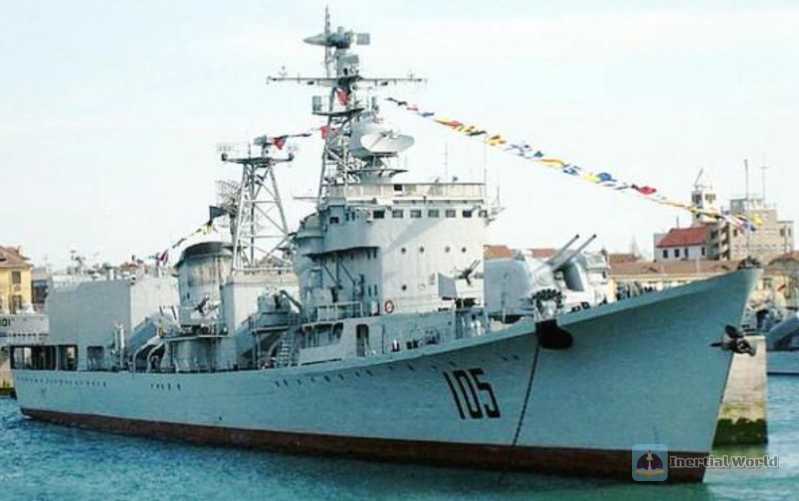
So the navy thought of using existing ships as a carrier platform. The first ship of China’s first generation of missile destroyers, the Type 051 Jinan ship (hull number 105), was commissioned at the end of 1971 and carried out a large number of tests to verify the basic performance of the ship, such as speed, stability, and seaworthiness. Due to the limited space inside the Jinan ship, the installation of the system brought some difficulties, but it did not affect the various test tasks of the system in the end. The subsequent sea trials were very satisfactory. The whole system showed the characteristics of fast response speed, large number of target tracking, and strong anti-interference ability. The subsystems were smooth and stable, meeting the requirements for ship installation. Due to the successful completion of the system’s sea trials, the shipborne combat command system with world-leading level was used on China’s second-generation destroyers as scheduled.
It can be said that the construction process of the Jinan ship itself is an unprecedented large-scale test of China’s large-scale ship system engineering. The Jinan is undoubtedly a milestone. As the first domestically built guided missile destroyer and the first ship of the Type 05I destroyer, it laid the foundation for the development of the first generation of medium-sized surface ships of the same type in China. Subsequently, the Jinan participated in the finalization test of the "Sea Eagle" ship-to-ship missile system, the major modification test of the Type 76 main gun, and the finalization test of the Type 7221 missile launcher. In order to verify the carrying and use of ship-borne helicopters, the Jinan was once again modified as a test platform. The modification mainly removed the main and secondary guns and depth bomb launchers at the stern of the ship, and installed helicopter landing decks, various landing aids, and hangar facilities. In December 1988, China’s ship-borne helicopter successfully landed on the Jinan for the first time. It is understood that among these test tasks, the most important project is the ship installation test of the first set of ship-borne command systems of the Chinese Navy and the helicopter on-board test. In the following years, helicopters conducted hundreds of take-off and landing tests on the Jinan ship, which enabled the Chinese Navy to gradually master the relevant technologies of helicopter take-off and landing on combat ships, and had an intuitive understanding of the use, maintenance and upkeep of ship-borne helicopters at sea. Most of the valuable experience accumulated by the Jinan ship was applied to the domestically built second-generation missile destroyers later.
The emergence of the Jinan ship has made a significant contribution to the development of weapons and equipment of my country’s naval combat ships. During this period, the ship has completed more than 2,200 test tasks and obtained more than 1 million test data. It is known as the "pioneer" of naval equipment modernization.
The Kaifeng ship, a link between the past and the future
The Kaifeng ship, a missile destroyer that was later commissioned, also undertook a series of test tasks for new weapons and radar equipment. The Kaifeng ship was originally a very ordinary follow-up ship of the 051 destroyer. It was commissioned in the early 1980s and assigned to the North Sea Fleet. In the mid-1980s, it began to undertake some weapon test tasks, the first of which was the finalization test of the "Sea Eagle" 1A ship-to-ship missile. The most important test project was the test of modifying the French "Sea Sidewinder" ship-to-air missile system in the late 1980s. At that time, using other types of ships or ships in service to modify them for use as test ships was one of the ways for some countries to solve the problem of sea trials of shipborne equipment. For example, the US "Norton Sound" ship was modified from a seaplane supply ship and became a test ship for the development of the US Navy’s main weapon systems, the "Aegis" system and the vertical launch system; the British "Longbow" test ship was modified from a 12,000-ton salvage barge. At that time, it was used as a test platform for the vertical launch "Sea Wolf" air defense missile system, and later other guided weapons were tested.
In order to fully test the actual performance of the "Sea Sidewinder" ship-to-air missile system and the adaptability and reliability of the ship, the Kaifeng ship also underwent certain modifications in terms of layout and radar system.
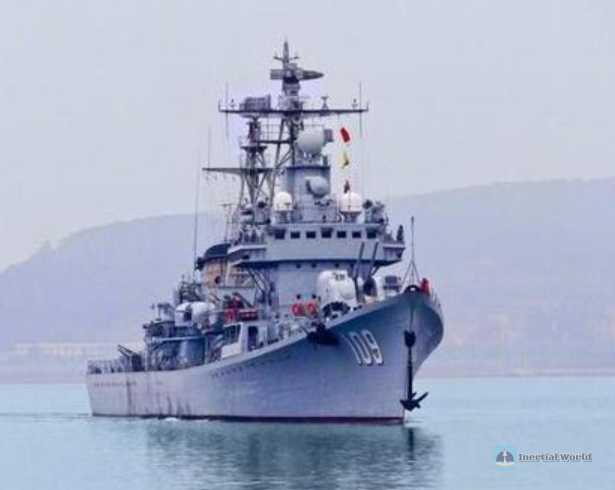
In order to accommodate the "Sea Sidewinder" ship-to-air missile launcher and ammunition box, the Kaifeng removed the 76-type double 37mm naval gun on the stern platform and installed the 8-unit launcher of the "Sea Sidewinder" ship-to-air missile here, followed by the reloading box. In this way, without significantly changing the hull structure, the "Sea Sidewinder" has a better installation position and achieves a relatively ideal effect in terms of firing range. As part of the "Sea Sidewinder" ship-to-air missile system, a "Sea Tiger" air-to-sea search radar was modified on the Kaifeng ship’s rear mast to provide air target data for the "Sea Sidewinder" ship-to-air missile. At the same time, the ship also installed a modified version of the ship-borne combat command system that had been tested on the Jinan ship for the first time, which can form a complete combat system with the air defense missile system to further test the performance of the introduced air defense system. This shipborne combat command system and the "Sea Sidewinder" ship-to-air missile will be the main combat equipment of the domestically produced second-generation missile destroyers, so it is necessary to conduct comprehensive system debugging on the Kaifeng ship with shipborne weapons, radar, electronic warfare systems, etc. From this point of view, the Kaifeng ship can also be regarded as the pilot test ship of the domestically produced second-generation missile destroyers.
In the following years, the Kaifeng ship conducted many live-fire tests of the "Sea Sidewinder" ship-to-air missile, and conducted interception tests on different targets such as high, medium, low altitude and sea skimming, all of which achieved very satisfactory results.
In addition to the Kaifeng ship, the two improved 051G destroyers that entered service in the 1990s also have a strong experimental nature. They are the Zhanjiang ship (hull number 165) that started construction in December 1985 and entered service in 1989, and the Zhuhai ship (hull number 166) that started construction in April 1986 and entered service in October 1990. Although the 051G type is a modified version of the 051 type destroyer, except for the hull and power system are basically the same (but the hull and superstructure adopt a fully enclosed structure, which has the overall "three-defense" combat capability for the first time), the weapons, radar and electronic systems on the ship have been almost all updated, and most of these systems are also standard equipment on new destroyers. Therefore, these two ships can also be regarded as preliminary test ships for various types of weapons and systems before the construction of new domestic destroyers.
As some advanced technologies and design ideas of small-caliber naval guns in the world began to be introduced into China, it began to consider developing a fully enclosed and fully automatic naval gun based on the more mature 76-type double 37mm naval gun, requiring a higher rate of fire and shooting accuracy, and at the same time requiring a certain maritime anti-missile capability against the threat of sea-skimming anti-ship missiles. This fully automatic double 37mm naval gun completed land tests in the mid-1980s, and was subsequently equipped on the newly built Zhanjiang and Zhuhai ships for sea tests. It was finalized in the late 1980s and named the 76A double 37mm automatic naval gun.
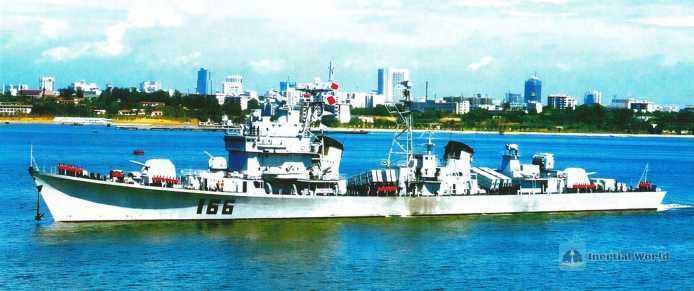
The wings of the Eagle Strike 81A missile have been changed to foldable, and it adopts mid-course inertial guidance plus terminal active radar guidance. The new radio altimeter reduces the terminal flight altitude of the missile to 5 meters, and increases the charge of the solid rocket engine. Although the weight and length of the missile have increased, the range has increased by nearly 1 times to 85 kilometers. This type of missile was tested in 1990 and was first equipped on the second ship of the 051 type, the Zhuhai destroyer (when the construction of the first ship of the 051G type, the Zhanjiang, was completed, the development of the Eagle Strike 81A missile had not been completed, so the old Sea Eagle 2 anti-ship missile was still used when it was in service). This move has two purposes. First, it is used to replace the old "Sea Eagle" 2 anti-ship missiles and improve the surface attack capability of the "Zhuhai" (the ship is equipped with a total of 4 twin-mounted missile launchers); second, the "Zhuhai" is used as a platform to test and improve the missile system (mainly to conduct system joint testing with the ship’s radar, fire control and command systems) to ensure coordination and compatibility between systems when used on new destroyers.
In addition, the 051G ship is also equipped with a complete anti-submarine weapon system for the first time, including the imported light anti-submarine torpedoes, high-precision bow sonar and towed variable depth sonar system. Together with the original anti-submarine rockets on the 051 ship, the 051G ship has formed a fairly strong system combat capability. The towed variable depth sonar system is also of great significance. It has better detection capabilities than the hull sonar, and together with the bow sonar with improved signal processing system, it provides the ship with better underwater area detection capabilities. This anti-submarine system is also configured on the new destroyer. The actual performance and operation of the system need to be gradually explored and mastered. The 051G-type ship has made great contributions in this regard.
In terms of radar and electronic systems, the 051G-type ship has also undergone great changes. The ship is equipped with a large number of new equipment developed for the new destroyer, such as fire control radar, detection system, active/passive electronic warfare system and combat command system. This type of ship is more about testing the electromagnetic compatibility and system compatibility issues between various systems. The most important thing is to verify the possible problems in the interface and coordination between the radar system introduced from abroad and the ship-borne combat command system, so as to ensure that the new ship is as perfect as possible in these aspects.
China’s first anti-submarine ship - Siping
The "Siping" missile frigate is the first helicopter-carrying frigate designed and built by my country’s own Navy, with the hull number 544. The 544 is 103.2 meters long, 10.8 meters wide, and has a draft of 3.19 meters; the standard displacement is 1,674 tons, and the full load is 1,924 tons; it is powered by 2 diesel engines, with a speed of 30 knots; the range is 7,200 kilometers, and the establishment is 190 people.

In the early 1980s, influenced by the close military and technical cooperation with Western countries, in November 1983, the Naval Ship Department approved the installation of the TC100C single-barrel compact 100mm naval gun and the matching "Najia" optoelectronic fire control system on the hull of the 053H1 frigate. In February 1984, the Naval Ship Department proposed that under the premise of the above-mentioned reconstruction of the 053H1, a helicopter landing platform and hangar should be installed on the rear deck to explore experience for helicopters on board, and the A224/S "Whitehead" light anti-submarine torpedo imported from Italy should be installed to make it a full-time anti-submarine missile frigate.
The modification plan was given the special code name 053H1Q, and the modification target was selected as the fifth 053H1 missile frigate, which was built at Shanghai Hudong Shipyard on November 15, 1984. Compared with the standard 053H1 missile frigate, the 053H1Q anti-submarine frigate cancelled the rear main gun and a set of twin-mounted "upstream" No. 1 anti-ship missile launchers, and installed a 12.5-meter-long, 8.5-meter-wide, 5.6-meter-high helicopter hangar on the rear deck, as well as a 21.6-meter-long, 10.8-meter-wide helicopter landing platform. The platform is equipped with a "harpoon" landing aid system, which can carry an imported French "Dolphin" or a domestically produced Z-9 shipborne anti-submarine helicopter.
In addition, the front main gun of 053H1Q adopts the imported French TC100C compact single-barrel 100mm naval gun to replace the standard 79-type double-barrel 100mm naval gun on 053H1, and is equipped with a matching French "Najia" optoelectronic director. The secondary gun is the same as that used by 053H1, which is four 76-type twin-mounted 37mm machine guns. Although this type of gun still uses an open gun mount, it can perform fully automatic shooting under radar control, while retaining the backup manned shooting capability.
As an anti-submarine missile frigate, the most prominent shipborne weapon of the 053H1Q frigate among the 053 series frigates is the two triple-mounted 324mm B515 torpedo launchers at the rear of the hull (the only 053 series frigate equipped with anti-submarine torpedoes), which are used to launch the A224/S "Whitehead" anti-submarine torpedoes imported from Italy, 24 spare torpedoes, and the matching domestic 7826B anti-submarine torpedo digital director. This is also the only warship equipped with electric small anti-submarine torpedoes by the PLA Navy. Since then, with the successful development and equipment of the domestic Yu-7 anti-submarine torpedo, the "Whitehead" torpedoes will no longer be introduced.
In addition to anti-submarine torpedoes, the anti-submarine weapons of the 053H1Q frigate also include two sets of five-mounted FQF-2500 rocket anti-submarine depth bombs located in front of the front main gun, which are used with the domestic 7826C anti-submarine depth bomb digital director. Due to the first anti-submarine torpedo equipped with FQE-2500 rocket depth bombs and the leading trial, the 053H1Q frigate became the first domestic warship of the PLA Navy with a mission of anti-submarine and above 1,000 tons. The European naval guns and anti-submarine torpedoes also made it quite "foreign" for a while.
The 053H1Q frigate was launched at the Hudong Shipyard on September 29, 1985, and was delivered to the PLA on December 24, 1985. Served in the Navy’s North Sea Fleet, hull number 544. On August 1, 1986, the 544 ship was named "Siping"
So far, the 544 ship has been transformed from the original 053H1 type to the 053H1Q type, from an ordinary sea-based frigate to a full-time anti-submarine frigate, but it has the characteristics of a typical test ship. The 053H1 frigate has been upgraded to a The frigate was upgraded to the standard anti-submarine frigate of the Type 500.
In November 1987, the Siping ship began to undergo the second phase of modification, including the installation of 348S search radar and 348C intelligence processing system and electronic countermeasure system, and the only set of dual anti-ship missile launchers was upgraded to enable it to launch "Upstream 1A" and "Upstream 2B" anti-ship missiles. Among them, "Upstream 2B" uses solid rocket engines and has a lowered flight altitude, which is close to the technical level of "Eagle Strike" 81. Other improvements include the installation of a centralized control console for the navigation system, the installation of SJD-7 variable depth sonar and 348 fire control radar.
In 1988, the "Siping" frigate was made public in the form of photos at the International Defense Exhibition held in Shanghai. Because it used a large number of imported subsystems, the ship attracted much attention from abroad. Foreign media speculated whether China would build more 053 series based on this model. The anti-submarine frigate of the series.
However, at that time, the cost of introducing equipment and shipborne weapons was very high, and the actual performance of the 053H1 and Siping ship showed that these expensive foreign equipment could not fully play their due role. Therefore, the "Siping" frigate played a greater role in the navy as a test platform for new technology equipment, and conducted certain preliminary explorations for the development of the later 053H2G/H3 and other types of frigates.
For example, the French TC100C compact naval gun installed on the Siping ship absorbed relevant technologies (at that time, a total of two guns of this type were imported, and in addition to the one installed on the Siping ship, the other was disassembled and mapped), and the 87-type 100mm automatic naval gun was improved and manufactured, becoming the standard main gun of the 052B, 052C, 051C and 054 destroyers and frigates built in the early 21st century. In addition, the domestically produced "Yu-7" thermal power anti-submarine torpedo based on the "White Head" and MK46 anti-submarine torpedoes has also become the standard anti-submarine torpedo for the destroyers and frigates of the Chinese People’s Liberation Army Navy.
In short, during the service of the Siping ship, it successfully completed the modification, testing and major military learning and training tasks of many new equipment. Missile launches, artillery and torpedo attacks directly hit the target many times. The sonar system has repeatedly made great achievements in submarine search and attack training exercises. In the task of tracking and expelling submarines of unknown nationality, it created a glorious battle example of continuous tracking for 65 hours and expelling them from the country, winning the title of "China’s No. 1 Anti-Submarine Ship".
And most of the various experimental results achieved by the Siping ship were directly applied to the newly built frigates and destroyers, especially for the 2,200-ton 053H2G frigate behind, solving the problem of helicopter boarding, and made a significant contribution.
In 2005, according to the order of the Central Military Commission, the "Siping" missile frigate was transferred from the North Sea Fleet to the Dalian Naval Academy and assigned to the Maritime Ship Training Center of the academy. It mainly undertakes the maritime training tasks of naval academy students and serves as a helicopter landing and take-off training ship. In July 2010, the "Siping" missile frigate was renamed "Lüshun", becoming the only missile frigate named after a county-level city in the PLA Navy. In 2020, the Lüshun ship was officially retired and donated by the Navy to Xingguo County for use as a national defense education base.
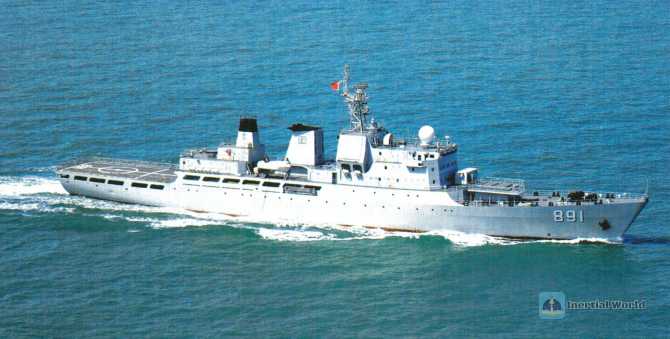
The first generation of special marine comprehensive test ship of the Chinese Navy-909 test ship
After entering the 1990s, the pace of renewal of Chinese Navy destroyers and frigates accelerated, and a large number of new models of surface ships were launched. The new generation of famous ships obviously lacked technical continuity in terms of shipborne weapons, electronic equipment and other subsystems compared with the previous generation of destroyers and frigates such as the Type 051 "Luda" class destroyer and the Type 053 "Jianghu" class frigate. These numerous new systems have a high starting point for design, a large technical span, and a high level of technical performance. Therefore, the test and finalization are more complex than the previously developed systems, and the requirements for test ships are also higher. In this way, the practice of the Chinese Navy’s previous practice of refitting active ships to test new weapons and radar electronic equipment is difficult to meet the needs of new system testing.
What’s more, since there are many types of weapons and electronic systems being developed at the same time, if the past practice is still followed, it will be necessary to simultaneously transfer multiple active ships from the combat forces for modification, which will have an adverse impact on the normal patrol, combat and training of the surface ship forces. Therefore, the Chinese Navy decided to build a special comprehensive test ship, namely the Type 909 comprehensive test ship, and the first ship is the "Bi Sheng" comprehensive test ship.
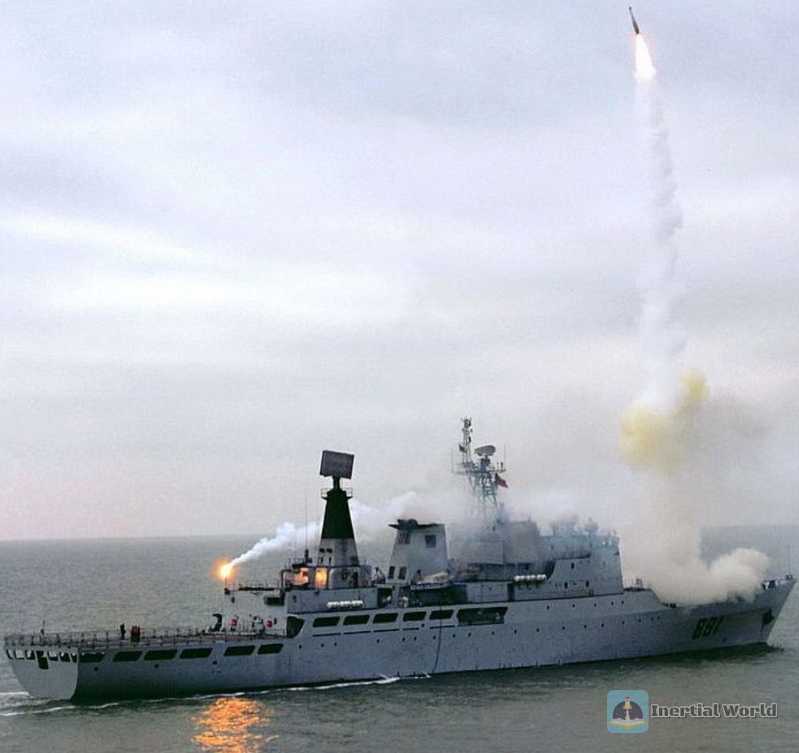
The Bi Sheng ship was officially delivered to the Navy in 1997. It should be pointed out that due to its special purpose, the Bi Sheng ship was not given a ship name at the beginning of its service, but was only given the hull number 909; in August 1997, after the sea trial of the ship was completed, the hull number on the hull was changed to "Test 970" In October 2002, the Navy officially named it after the inventor of movable type printing "Bi Sheng" and changed the hull number to "891"; in July 2021, the Bi Yi ship changed its hull number to "851" again
As the first comprehensive maritime test ship of the Chinese Navy, the design goal of the Bi Yi ship is: in addition to being able to complete the previous sea trials, In addition to the sea trials of a single subsystem on the 105th and 544th ships, the ship should also have the comprehensive test capability to independently complete the sea trials of the entire shipborne combat system on the same test platform, including the need to meet the needs of simultaneous individual or joint debugging and testing of multiple different weapons, radars, and electronic equipment. It can analyze and evaluate a single system, and can also conduct overall testing of the complete combat system covering the command system, sensors, and weapon systems to solve possible compatibility issues between systems, truly integrate various subsystems into a large system, so as to avoid the phenomenon of being forced to "rework" due to insufficient testing after the combat system is put into service, and ensure the rapid formation of the combat capability of new ships.
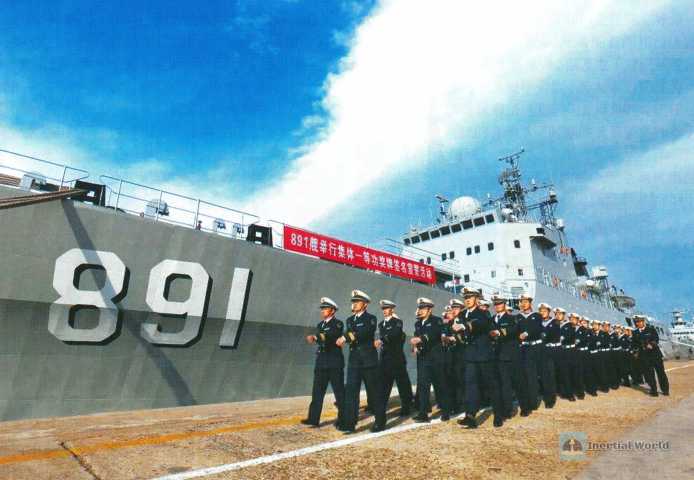
In order to achieve the above design goals, the "Bi Yi" took into account the installation needs of multiple systems at the beginning of its design. Its hull adopts a clipper bow and a central bridge design. There is a clear angle line at the front of the hull to increase the space inside the ship. Due to the small length and width of the hull, plus the large ship arc design at the front of the hull, it can suppress the bow from rising waves and improve the ship’s wind and wave resistance and seaworthiness.
The superstructure of the ship is relatively neat. From the bow to the back, there are four parts: the front test platform, the bridge and the middle test platform, the chimney and the rear test platform. Sufficient space is reserved for the installation of various weapons and electronic systems on the front, middle and rear test platforms. The rear part of the hull is a helicopter landing platform about 30 meters long, which can meet the landing and take-off of large and medium-sized helicopters. The Bi Sheng meets the requirements of the aircraft carrier, but the hangar is not designed, which is a small flaw.
In terms of power, the Bi Yi ship is equipped with two high-speed diesel engines commonly equipped on the new generation of destroyers and frigates of the Chinese Navy. The diesel engine has stable performance and mature guarantees with double propellers and double rudders, but the total output power of the two diesel engines is only 14,000 horsepower, which is relatively low compared with the displacement of 4,630 tons of the "Bi Yi", so the maximum speed of the ship is only 18 knots. However, as a non-combat ship, the Bi Sheng ship does not have high requirements for high-speed performance, so the maximum speed of 18 knots can meet the requirements whether it is sailing at sea or testing weapon systems. In addition, the ship is also equipped with side thrusters at the bow to improve maneuverability when sailing at low speeds and leaving and docking.
It is reported that the Bi Sheng ship has a displacement of 4,630 tons and a waterline length of 120 meters. The crew consists of 95 people. The ship’s power system is completely set up in accordance with the standards of the third-generation destroyer. There are a large number of special cabins for scientific research and testing personnel, and various weapon system test platforms. It can carry 3 sets of shipborne systems for testing at the same time, so it can continue to enter the shipyard for modification to complete different test tasks. It can be called a multi-talented ship at sea.
After the "Bi Sheng" comprehensive test ship was commissioned in the mid-1990s, it began to undertake heavy weapon system test tasks. Most of them are supporting projects related to the construction of domestically produced third-generation destroyers and frigates. Many of them are high-tech weapons that fill the gaps in China’s naval equipment and narrow the technological gap with the world’s advanced equipment. Whether these weapon systems can finally successfully complete the development, testing and finalization work is directly related to the construction of the third-generation destroyers and frigates, which are of great significance to the development of the Chinese Navy. At that time, the Bi Sheng ship What weapons tests were undertaken were not known until the beginning of the 21st century, with the completion of the finalization tests of various weapon systems and the start of the construction of domestic third-generation destroyers and frigates, some test projects gradually emerged. The most noteworthy of these are the new ship-to-air missile system, ship-to-ship missile system and medium and small caliber naval gun systems.
For the Chinese Navy, the lack of effective maritime air defense capabilities, especially regional air defense capabilities, has long been a "shortcoming" that has plagued the development of the Chinese Navy. Therefore, when the Chinese Navy started the development of a new generation of main battleships in 1983, it listed the improvement of ship air defense capabilities as a key research direction. Specifically, in terms of equipment models, it is a new generation of ship-based air defense radars and a new generation of medium- and long-range and medium- and short-range air defense missiles. These three new equipment were all designed and finalized on the Bi Sheng.
From 1998 to 1999, the Bi Sheng ship installed China’s first ship-borne phased array radar on the right bridge, and then carried out related testing work. This active phased array radar, as the core equipment of the new generation of air defense ships of the Chinese Navy, was finally installed on the 052C air defense destroyer.
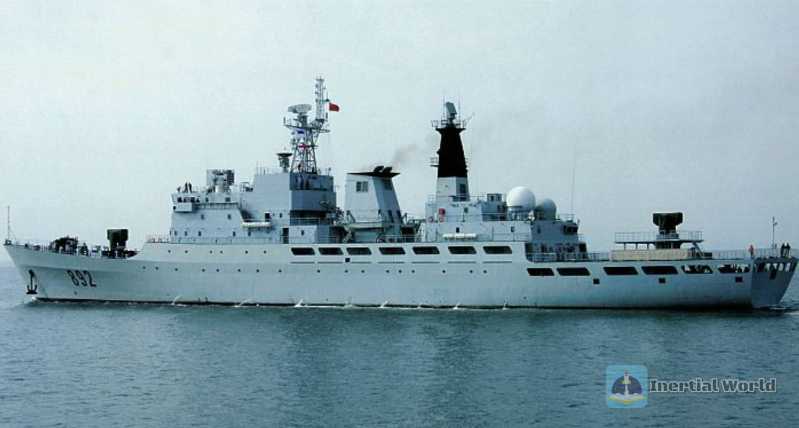
Almost at the same time as testing the new air defense radar, two new ship-borne The ship-mounted test of the air defense missile system. Both new ship-to-air missiles adopt vertical launch mode. One is a "revolver" cold launch system similar to the Russian SA-N-6 system, which is used to launch the Chinese Navy’s new generation of "Haihongqi-9" medium- and long-range ship-to-air missiles. The other is a hot launch system similar to the US Navy’s MK-41 vertical launch device. This system has an independent flame exhaust channel and is significantly smaller than the cylindrical launch device on the ship. It is used to launch the Chinese Navy’s new "Haihongqi-16" ship-to-air missiles, which are mainly responsible for medium- and short-range air defense operations.
In 1999, the Bi Yi completed the first successful test launch of the "Hai Hong Qi-9", and achieved very good test results. Subsequently, it conducted several interception tests of targets of different types, directions and altitudes, and also achieved satisfactory results. The subsequent related testing of the "Hai Hong Qi-16" also progressed smoothly. Both eventually became the main combat weapons of the Chinese Navy’s new generation of Type 052C air defense destroyers and Type 054A frigates, and together built a new generation of multi-level air defense systems for the Chinese Navy’s surface fleet.
Like the new ship-to-air missiles, the testing of the Chinese Navy’s new generation of long-range ship-to-ship/shore-to-ship missiles was also completed on the Bi Sheng. In the pictures of the Bi Yi ship that were released later, you can clearly see the large four-unit cylindrical ship-to-ship missile launcher installed between its bridge and chimney. Foreign military commentary agencies reported in the late 1990s that China was implementing a new ship-to-ship missile program, namely the "Eagle Strike"-62, which is a long-range heavy ship-to-ship missile. This anti-ship missile with a small turbine engine has a much higher range and strike power than the previous "Eagle Strike"-8 series. After completing the relevant maritime adaptability and compatibility tests with radar and combat systems on the Bi Yi ship, the "Eagle Strike"-62 was finally designed and equipped on the 0520 air defense destroyer.
In addition to developing a new generation of ship-to-air missiles, the Chinese Navy also completed the first generation of domestically produced 7-tube 30mm close-in defense system, commonly known as the "Chinese version of Goalkeeper", in the mid-1990s, and subsequently carried out relevant land tests, conducting live-fire tests on various types of simulated targets entering from high, medium and low altitudes. After completing the land test, the new close-in defense weapon system, like many other new equipment, was finally completed after the sea-based finalization test on the Bi Sheng ship, becoming China’s first practical multi-tube close-in defense weapon system.
In addition, the Bi Sheng ship is also the test site for the new generation of radars for our navy’s destroyers and frigates. As early as the 1990s, my country began the relevant research and development of sea-based active phased array radars. In 1997, the "Bi Sheng" comprehensive test ship was officially put into service. After that, the ship’s main task for a long time was to serve as an experimental platform for the Type 346 sea-based phased array radar, making an important contribution to the successful development of the Type 346 sea-based phased array radar.
In addition to the weapon system, the Bi Sheng is also a test platform for the Chinese Navy’s new generation of shipborne combat command system and integrated electronic warfare system. Since the ship can be equipped with a variety of different types of shipborne weapons, it can be integrated with the new generation of combat command system for comprehensive testing. Therefore, the test effect is significantly superior to the previous testing on different platforms. At the same time, it can also quickly discover problems in system integration, greatly accelerating the testing progress and equipment process of the new system.
It is worth mentioning that on December 23, 2022, on the eve of the 25th anniversary of the Bi Sheng’s service, the People’s Navy pushed the article "What does this "soldier king" think when he is overdue for retirement?", with pictures of the Bi Sheng’s main gun, secondary gun, missile launch, etc. Two of the pictures are particularly noteworthy.
One of the pictures shows the Bi Sheng vertically launching a certain type of missile. The lower part of the missile is thicker and black, and the upper part is thinner. It is a "bare rod missile" disclosed for the first time. Its unique appearance is neither a "Sea Red Flag" air defense missile nor an "Eagle Strike" anti-ship missile. It is interpreted by the outside world and military fans as a Hongqi-19 or Hongqi-26 sea-based terminal anti-missile interceptor missile that is being verified but not officially listed. The second picture is a picture of the "Bi Sheng" test ship vertically launching a type of interceptor missile similar to the US Standard-3BlockIIA. Both are quite similar in appearance and launch method. The Standard-3BlockIIA interceptor missile is a new type of anti-missile interceptor missile developed by the US military with advanced performance. Therefore, some media speculated that the test ship "Bi Sheng" was likely to test a domestically produced sea-based mid-course anti-missile interceptor missile.
This move means that in the near future, our Navy’s 052D/DL destroyers and 055-ton destroyers may be equipped with sea-based mid-course and terminal anti-missile interceptors to intercept medium- and long-range ballistic missiles in and out of the atmosphere, allowing these large air defense destroyers to have sea-based anti-missile capabilities. It can be seen that even though it has been in service for 25 years, the "Bi Sheng" comprehensive test ship is still working hard and striving for the modernization of the Chinese Navy.
With the continuous development of the People’s Navy, various new equipment has continued to emerge, and the test tasks of new weapons have become increasingly heavy. So the Navy has commissioned a second exclusive test ship-the 909A 892 Hua Luogeng ship.
The Hua Luogeng ship was built at the Shanghai Hudong-Zhonghua Shipyard in June 2005, launched in March 2006, and commissioned in December 2006. The ship is mainly responsible for sea test command, sea mobile measurement, and launching target aircraft and target missiles under conditions close to actual combat at sea. It has successfully completed more than 200 major test and training tasks, and has been commended by the Navy as a "model unit for grassroots construction", "model unit for advanced ship companies", and "advanced unit for equipment work" many times, and has won the second-class and third-class collective merits once each.
A large number of naval weapons and equipment and electronic equipment of the Chinese Navy were tested and finalized on the Hua Luogeng ship. For example, the FL3000N short-range air defense missile Eagle Strike-62, the Sea Red Flag-9/16, the active phased array radar equipped with 052C, the 730 close-in defense gun, the 87-type anti-submarine depth bomb, as well as the electronic countermeasure system, satellite communication equipment, etc. Compared with the first ship Bi Yi, its general layout is relatively similar, mainly with different superstructures. Because its main responsibility is weapon testing, the weapons and equipment and radar equipment of the two ships at different times are quite different.
The most important task of the Hua Luogeng ship after it entered service was to test the Haihongqi 10 close-in defense missile. When it was equipped with the most, a Haihongqi 10 close-in defense missile launcher was installed on the front and rear decks of the ship. The main gun position on the front deck was equipped with a 24-unit launcher, and the rear was temporarily installed on the helicopter deck. A platform was installed with an 18-unit Haihongqi 10 launcher.
In addition, the Hua Luogeng ship was also equipped with the Eagle Strike 12 supersonic anti-ship missile. As China’s first self-developed supersonic anti-ship missile, this type of missile is highly expected by the navy. Its range is more than 300 kilometers, with fast speed and great power, and it poses a great threat to large enemy ships. Hua Luogeng was equipped with this type of missile for the first time. After the test was successful, the missile was also successfully installed on the modern class destroyer Hangzhou and the Luhai class destroyer Zhuhai, greatly increasing its anti-ship combat capability after modernization.
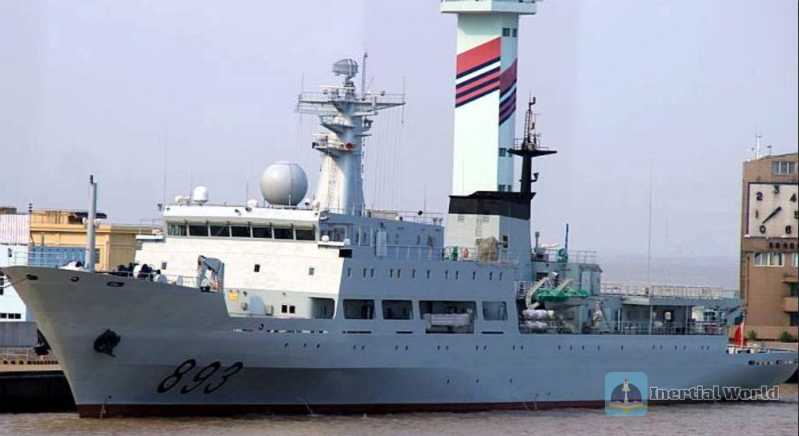
China’s new maritime comprehensive test ship--910-type test ship
With the further development of the Chinese Navy and the emergence of various new types of ships, the performance of the 909-type maritime comprehensive test ship can no longer meet the needs, especially the volume and tonnage are relatively limited, which cannot meet the test needs of new ship-borne weapons. Therefore, my country has developed a newer 910-type maritime comprehensive test ship based on the 909-type maritime comprehensive test ship. It is reported that the Type 910 Maritime Integrated Test Ship is 129.3 meters long, 17 meters wide, and has a full load displacement of 6,080 tons. Its volume and displacement have been greatly improved compared to the Type 909 Integrated Test Ship. Two small multifunctional folding cranes are installed at the front of the bridge of the Type 910 Maritime Integrated Test Ship, and a multifunctional medium-sized articulated crane is installed on the stern deck. The crane has a lifting capacity of 53 tons and a lifting radius of 11 meters. If fully extended, the crane can reach a few feet from the stern. Its role may be to deploy remote-controlled unmanned underwater vehicles for testing purposes.
Unlike the Type 909 test ship, the new ship will no longer test ship-borne missile weapons and radar electronic equipment as its main task, but will test light and heavy torpedoes, anti-submarine missiles, depth charges, smart mines, a new generation of sweeping/hunting mine weapons, self-propelled underwater vehicles, large-aperture low-frequency active and passive sonars and other types of sonar equipment as its main task. Due to the high confidentiality of underwater weapons, we are still unable to know the specific models of its experimental equipment, but it is certain that the latest achievements in recent years have been applied to new nuclear submarines, new conventional submarines and anti-submarine ships. It has laid a solid foundation for the development and growth of the People’s Navy, and also reflects the Chinese people’s ambition to return to the top of the ocean.
Currently, there are four Type 910 comprehensive test ships, namely Zhan Tianyou, Li Siguang, Wu Yunduo and Huang Weilu. It is worth mentioning that Li Siguang was originally China’s first self-designed and manufactured 5,000-ton ocean-going survey ship, hull number 871, belonging to the Type 636 ocean-going survey ship, formerly known as Ocean Eighteen. The ship is 129.82 meters long, 17 meters wide, with a full load displacement of more than 5,800 tons, a maximum speed of 18 knots, a cruising range of up to 15,000 nautical miles, and a self-sustaining capacity of 60 days and nights.
The "Li Siguang" oceanographic survey ship is my country’s first modern oceanographic survey ship capable of performing surveying tasks in the open ocean. Its main scientific fields are ship engineering and ocean surveying and mapping. Its measurement system has the functions of positioning, water depth measurement, gravity, topography, landform, profile, tide level, meteorological observation, hydrological survey, collection, and processing. In order to control underwater self-noise and give full play to the performance of various acoustic measurement equipment, a blade-unloaded large-skew propeller is used to delay the generation of cavitation and greatly reduce the pulsating pressure above the propeller; the diesel generator set adopts floating raft vibration reduction technology and equipment, and the vibration level drop reaches 35.2dB; the main engine vibration reduction design, base and hull adopt damping treatment, and the vibration level drop reaches 25.5dB; the transducer acoustic platform adopts soft connection and sound absorption treatment. The actual ship has been tested and proved that the self-noise of the ship is much lower than that of the same type of ship, the measurement system technology is advanced, the control scale is large, and there are many measurement elements. The vibration reduction, noise reduction and acoustic compatibility design can be promoted and applied to the design of surface ships and submarines, and is also applicable to the design of oceanographic survey ships, hydroacoustic test ships, etc.
The "Li Siguang" oceanographic survey ship was commissioned in 1998 and made important contributions to my country’s marine hydrographic survey. It is reported that as of 2011, the "Li Siguang" survey ship has safely sailed 350,000 nautical miles and measured 547,000 kilometers. It has successfully completed more than 30 major survey tasks, filling more than 100 gaps in China’s marine surveying and mapping field, and provided a large amount of data for China to move towards becoming a maritime power. On November 16, 2012, the "Li Siguang" survey ship was officially retired and handed over to the fishery administration department.
Now the Li Siguang ship has been re-commissioned, but it has transformed into a comprehensive test ship of the Chinese Navy. Together with other test ships, it shoulders the important task of pioneering the modernization process of the Chinese Navy, which is of great significance to the future development of the Chinese Navy.
Conclusion
In addition to the above-mentioned test ships, my country has some other special test ships, such as the Type 072III weapon test ship, which is the famous Type 936 Haiyangshan. On this type of ship, our army focused on testing the first engineering sample electromagnetic gun. The huge and straight front deck of the Haiyangshan can easily accommodate a large number of auxiliary equipment with the electromagnetic gun, and thanks to the huge internal space of the prototype Type 072III tank landing ship and the newly added helicopter landing platform at the rear, the Type 936 Haiyangshan can carry more supplies and detection equipment, and can complete the test mission more comprehensively.
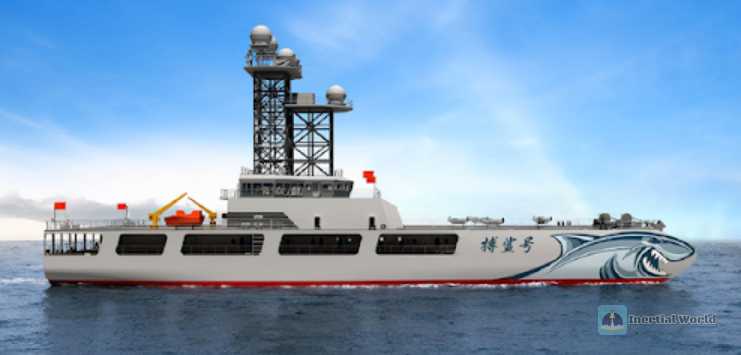
In addition, in 2021, the launch of my country’s first integrated electronic test ship, the Shark 1, attracted widespread attention. The Bosha 1 adopts a double hull design, with a length of 80 meters, a width of 35 meters, a depth of 6.5 meters, a draft of 2.8 meters, and a displacement of about 1,000 to 1,200 tons. As a comprehensive electronic experimental ship rather than a warship, the biggest highlight of the Bosha 1 is the five unmanned helicopter take-off and landing points with a diameter of about 5 meters on the front deck. Located in the center of the deck is the square-headed bridge. The part of the bridge located in the middle layer is in an obvious convex shape. This design should be to accommodate the operators required for drones and various electronic equipment. Located on the top floor of the superstructure is a 50-meter-high test tower. The test tower is equipped with 4 large antenna fairings and other electronic equipment. As a catamaran, the rear deck of the Bosha 1 is also very wide, and various tests can be carried out.
The Bosha 1 has the following main uses: First, the role of the Bosha 1 itself. As a surface ship with a 50-meter-high antenna tower, the Bosha 1 can simulate the installation environment with the corresponding vertical height that only aircraft carriers can have among conventional surface ships, which means that the Bosha 1 can test some radars that can be installed on aircraft carrier-type surface ships, which is consistent with the positioning of the Bosha 1 integrated electronic test ship. Secondly, since the Bosha 1 has a huge deck area, it means that the Bosha 1 can install a large number of corner reflectors to simulate the aircraft carrier RCS as much as possible and enhance the navy’s ability to detect aircraft carriers. Finally, the wide deck of the Bosha 1 can be used to mount and place various drones. On the one hand, it is used to test my country’s ship-borne drones and provide relevant data and usage experience for the development of my country’s ship-borne drones. On the other hand, the Shark 1 can also control various types of drones and make various maneuvers, simulating the tactics of the enemy’s carrier-based aircraft wing when launching an attack, simulating stealth fighters, simulating the target missiles of anti-ship missiles, and tempering the air defense, anti-stealth, and anti-missile capabilities of our navy. It can even carry swarm drones and simulate the use of swarm drones to train our army’s unmanned swarm combat capabilities and response capabilities. At the same time, the huge size of the Shark 1 can also carry various types of unmanned boats and conduct related tests on unmanned boats.
UAVs, unmanned boats and other unmanned combat equipment have now become an indispensable and important equipment for the navies of various countries. Unmanned combat has become a new mode of future combat and a new direction for countries to explore. The emergence of the Shark 1 is of great significance for my country to explore new modes of unmanned naval warfare and accumulate relevant technical experience.




